Calculate SDF Incentives
Q1. How can I calculate the cost per night for longer trips?
A. The table below will help you calculate the SDF cost per night, per person.

Tourist Trekking in Bhutan
While these are the lowest SDF calculations, the price in the SDF calculators on the Department of Immigration website will show you various price options based on which option you choose. So, we recommend you try all three calculators before proceeding to select the best option for your guests.
Q2. Can the incentives be repeated or combined for long stays?
A. The incentives can be repeated but not combined. For instance, guests staying for 16 nights can select the 4+4 option, which will be repeated to make 16 nights. But guests cannot select a 4+4 and a 7+7 for stays of 22 nights.
The same incentive can be repeated several times if required.
Q3. If guests select the 4+4 (or any other option), are they obliged to stay for the full 8 nights?
A. No, they do not need to stay for the full 8 nights. For instance, guests can choose the 4 + 4 option and just decide to stay in Bhutan for 5, 6 or 7 nights should they wish. They will still pay USD 800 and that will allow them to stay in Bhutan for between 4 to 8 nights, as per their convenience.
Q4. Can guests choose the lowest SDF calculation that the SDF calculators on the Department of Immigration’s website (https://visit.doi.gov.bt/) provide?
A. Yes. Guests can use any of the calculators provided on the DoI’s website and choose the best option for their trip.
Q5. What would be the best option for guests who wish to stay in Bhutan for between 4 – 8 nights?
A. The best option to select would be the 4 + 4 option which entitles them to stay for 8 nights.
Q6. What would be the best option for guests who wish to stay in Bhutan for between 9 – 10 nights?
A. The best option would be the 4 + 4 option, and then add on additional nights at USD 200. So it would cost USD 1,000 for 9 nights, and USD 1,200 for 10 nights.
Q7. What would be the best option for guests who wish to stay in Bhutan for between 11 – 14 nights?
A. The best option would be the 7 + 7 option.
For all options, guests also have the choice to select one of the three incentive options and add an extra few days by paying the full SDF after the chosen SDF incentive option expires / finishes.
Q8. What would be the best option for guests who wish to stay in Bhutan for between 15 – 16 nights?
- The best option for 15 nights would be 7 + 7 (USD 1400) plus another night at USD 200 = USD 1600
- The best option for 16 nights would be to take the 4 + 4 incentive and repeat it (USD 1600).
Q9. If I have guests who have a pre-approved visa visiting after June 01, will I need to reapply for them to avail the new incentives?
A. Yes. You will need to cancel their visas and reapply should you wish to avail the new incentives for them. The system will not automatically do this for you.
Q10. What happens if guests choose one of the SDF incentives and then leave earlier than planned? Are they entitled to any refund?
A. Any complimentary nights issued as part of the SDF incentive will not be refunded. However, if a guest pays the SDF for four nights (for example), and leaves after staying for three nights, they will be refunded the SDF for one night. If the guest pays the SDF for four nights and originally plans to stay for eight nights, but leaves after five nights, they will not be entitled to any refund.
Bhutan will receive a first Group of 34 Tourists on 2 April, Saturday 2022
A group of 34 International Tourist will arrive in the country (Bhutan) on April 2, 2022.
They will be in the country for 27 nights, including a quarantine period. They are from America, United Kingdom, New Zealand, Germany and France.
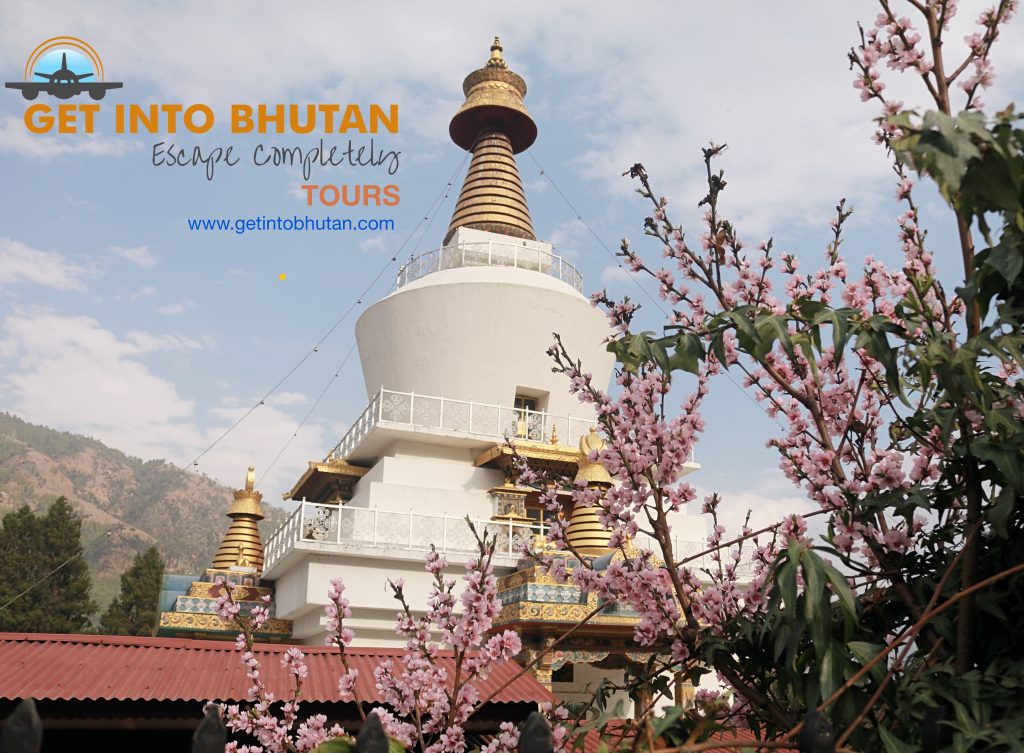
This will be the first group of tourists visiting Bhutan after almost three years. In March 2020 the entry of tourists in the country was suspended after detecting the first COVID-19 cases in the country. The five days quarantine guidelines will come into effect from April 04, 2022.
However, tourists will not have to pay Sustainable Development Fees (SDF) during the quarantine period.
COVID-19
https://www.facebook.com/MoHBhutan

Eco-Tourism
Ecotourism can be defined as “responsible travel to natural areas that conserve the environment, sustains the well-being of the local people, and involves interpretation and education”.
Additionally, ecotourism is a part of environmental conservation and understanding what the needs of the people, who are local to the area so that you can help to improve their quality of life.
Ecotourism, in the form of homestays with farm kitchen could therefore play a key role in the sustainable development in the far flung places of Bhutan, with rural households opening their doors to tourists across the entire region.
Currently, the ecotourism sector in Bhutan is underdeveloped. Despite nature being one of the two main attractions for tourists coming to Bhutan (the other being culture), nature-based tourism accounts for tourism activities.
Tourism can also cook food for rural communities while protecting the environment. Tourism generates significant revenue for the local communities through both formal and informal employment. Tourism services and infrastructure, including recreation, create local employment opportunities and increasing tourist expectations create new businesses and procurement opportunities for local communities. When an area is exposed to heavy tourist traffic, the local communities may also benefit from improved services in the areas, such as transportation and medical facilities.
The tourism is the most important foreign exchange earner and development pillar for Bhutan. In recent decades, the country is strongly pursuing ecotourism, including nature-based travel and local communities’ engagement in the tourism industry. Tourism revenues also fund the national parks through increasing park fees to discourage overcrowding.
Bhutan’s onset of tourism based on “high-value low volume” policy in 1970s was already in line with the principles of ecotourism.
This was apparently premised on the principles of Gross National Happiness, as indicated by a recent national definition based on earlier definitions6. It defines ecotourism as “high-value low impact” travel that supports the protection of natural and cultural heritage, provides positive and enriching experiences for visitors and hosts, assures tangible benefits to local people, and contributes to the Gross National Happiness7.’
Bhutan’s Ninth Five-Year Plan identified tourism as a priority economic sector and emphasized the development and promotion of sustainable tourism in the country for the protection and integration of Bhutan’s unique culture and natural resources. As a new approach to tourism for improving services, promotion of seasonal and regional balanced development, and diversification of products for tourists, and increasing the involvement of local communities and benefit sharing.
Given the intact natural landscape and the significant global val-ue of Bhutanese biodiversity, there is tremendous scope for ecotourism to provide long-term solutions for sustaining the protected areas, biodiversity, and community livelihood development actions. This provides a mutual opportunity for generating much-needed environmental financing, as well as a mechanism to engage communities in environmental conservation. Doing so will also support the realization of Bhutan’s development goals and GNH.
From economic perspectives, it will explore how ecotourism can be a “green product” based on Bhutan’s natural assets, create potential for public-private partnerships through ecotourism concessions in ecologically rich areas, and encourage tourism operators towards environmental and social considerations.
Bhutan’s tourism policy provides a perfect platform to pursue and promote ecotourism. Bhutan has a great potential to build on its current strengths and lessons to create exemplary ecotourism projects, given the national priority to protect environmental and cultural heritage while promoting equitable socio-economic development through GNH. However, existing gaps and challenges need to be addressed to steer ecotourism development in the right direction.
Lessons on ecotourism across the globe shows that it is not unusual to confront challenges and issues in the early stages and years of experience in the field, significant changes to the system and meaningful investments in the tourism sector can transform Bhutan into a model ecotourism and carbon-neutral destination.
Budget Travel tips to Bhutan
Bhutan budget trip is planned by backpackers annually across the world. Bhutan is a travel destination is not only beautiful but also extremely budget friendly. Also, it is one of the most travel-friendly locations in Asia.
- Plan your trip during the lean season. The minimum daily tariff levied to tourists visiting Bhutan varies depending on the season of travel.
- Travel with a group. Solo trip to Bhutan can be expensive.
- Explore royalty-exempted regions.
- Avoid premium/luxury tour packages.
- Entry from the Border town.
- Be smart with the flight air tickets.
- Book the tour directly with Bhutan operator
Best time to visit Bhutan
Spring and autumn are the best time to visit Bhutan. Having said so, summer and winter have their own draws and attractions.
Spring
Spring is the favourite time to visit Bhutan. Nature lovers who are keen on local flora should consider visiting Bhutan end of April or in May. Flowers would be in full bloom then.
Month – March, April & May
Recommends – Jomolhari Trek & Drukpath Trek from mid-April till end May
Festival – Gomkora, Festival in Trashigang
Attraction – The Jacaranda ivy blossoms at Punakha Dzong in Thimphu in mid-May beautify the landscape of Himalayas.
Usually, Paro Tshechu takes place towards end of March and early April. This is the best festival in Bhutan, King of Bhutan often makes his way to the festival between the 3rd and last day of festival.
The ever-popular 5 days Paro Tshechu will be thronging with the travellers. Bhutan flight inbound tickets would be fully sold out by January itself.
Fall/Autumn
Fall is another high and crowded season for Bhutan. The mild weather in autumn makes it a perfect time to visit Bhutan. Thimphu Festival usually takes places at the end of September or early October.
Months – September, October & November
Recommends – Black-Necked Crane Festival. Stay with a local villager in the beautiful valley of Phobjikha and witnesses the one day Black-Necked Crane Festival and do your part to help nature conservation!
October – see the valleys turn into a shade of gold as rice farmers prepare to harvest their paddy.
In late-September, the Thimphu Tshechu is a grand affair in the capital of Bhutan. Thimphu tshechu also occurs about the same time as Wangdi tshechu and the chance to attend two festivals on one trip is always very tempting. Another crowded festival calendar, this time in central Bhutan is the Jakar, Jambay Lhakhang Drup & Prakar Tshechu. Trongsa of travellers pays homage to the Switzerland of Asia at this time to attend the mysterious Jambay festivities that was fabled for its bonfire dance of 20 masked and naked dancers.
If you would like to attend this festival, do be prepared to stay in some less comfortable hotels too.
Summer
If you like to avoid the higher tariff and the cold of winter, consider visiting Bhutan early June. If the monsoon is late, the whole of June will be great for traveling. Monsoon will be in its earliest in July. Some outlying district such as Gangtey can be given a miss as the country road can be swollen with mud. Summer often offers vibrant green foresting and flourishing paddy fields against a backdrop of the clear blue sky after the rain.
Months – June, July & August
Recommends – Nimalung Tshechu in June. Kurjey Festival in late June celebrates very important holy sites of Guru Rinpoche.
The summer season started attract higher level of tourists as many have the conception that Bhutan is looking more green and beautiful.
Winter
To avoid the crowd and catch the Black-Necked Cranes, winter would be the time to go. To catch Himalayan blue sky without paying the additional tariff, consider visiting Bhutan in December. The temperature will not be too cold yet as lowest temperature usually takes places near the end of January. In January or February, Paro and Thimphu may experience a one-day snow.
Months – December, January & February
Recommends – Punakha Dromche. It is a weeklong celebration of the founding of Bhutan in the 1600s. The festivities take place around the ancient capital and most beautiful dzong in Bhutan. The mild weather of lower Punakha also makes this town a great winter escape for the Bhutanese.
Trongsa Tshechu – It is an intimate affair with only a small handful of attending travellers. This festival has some of the most elaborate festival costume for the dancing lamas.
Expect snowfall in mid-January till towards the end of February. Extreme weather and heavy snowfall may render the roads to central and eastern Bhutan.
International Arrival by Month
About 30% of international tourists arrive in the month of October. We would highly recommend travelers to book at least three months in advance if you are considering of traveling in the month of October. Travelers who would like to avoid the crowd but enjoy the best weather may want to consider the month of May and November. If you would like to save as much as possible with the lowest possible price, consider traveling in June or December. You would enjoy the low season price while still having favorable weather.
Reasons why everyone is traveling to Bhutan is in bucket-list!
Among many exotic places in the world, the country Bhutan also comes in the list. Bhutan is known as the ‘Land of Thunder Dragon’, one of few countries still bestowed with the adorable and charismatic kings.
Recently Bhutan was listed first in the ‘places to visit in 2020″ by lonely planets. There are ample of reasons to visit Bhutan but why would anyone need a reason to visit the last Shrangrila on earth.
Here is some of the utmost reason why you should add “a trip to Bhutan” in your bucket-list:
1. It’s the only country where the production of Co2 is less than it consumption and 71% of lush green forest coverage which means the only “carbon negative” country in the world hence could there be any better place to purify your soul and body with fresh oxygen.
On top of that Bhutan is the first country in the world to have banned the sale of tobacco under its Tobacco Act of 2010, hence you can ensure clean and fresh air.
2. Among some of the countries, which have not been, colonized Bhutan also comes in the queue. Therefore Bhutan is still enriched with its pure age-old rich culture and traditions. Medieval Fortresses are ubiquitous in Bhutan. Bhutan is decorated with many monasteries, dzongs, chortens, prayer wheels and prayer flags that symbolize Buddhism. Traditional methods are still used for farming, cooking and other tasks. The locals wear the traditional attire and ancient festivals that have been enjoyed since the 16th century still take place.
3. Bhutan being a small country nestled in the Himalayas is an off-the-beaten-path destination with numerous winding trails and due its rugged terrains provides a multitude of nature based outdoor adventures for adrenalin junkies. However mountains are forbidden to climb but trekking is allowed through trails passing dense forest. If you are a great enthusiast of trekking there is no doubt that the best place to utilize the youthful energy is in Bhutan.
4. Bhutan has a unique development philosophy. It uses happiness of its people to measure national progress. GDP remains secondary. Bhutan may not be the richest country in the world but it definitely has the happiest people in the world. Even now during the pandemic the nation is doing their best to protect the people. There is sense of trust and friendship among the Bhutanese people. The positive happy vibe that the country breathes out makes Bhutan an ideal destination to unwind.
5. Bhutan is gifted with a rich biodiversity due to its significant variance in altitude from the southern foothills to the northern mountains and different climatic conditions in these regions. Its climatic condition ranges from subtropical in the south to alpine region in the north. Visitor’s experience with nature in Bhutan can vary depending on their location and the time of the year. Bhutan is also home to many endangered species therefore if you are a great enthusiast of witnessing some of the rarest species no place is better than Bhutan.
6. One of the most distinctive trait of Bhutan is its cuisine where the most essential ingredients are hot chilies in order to warm up the body in the cold temperatures and cheese with generous serving of rice ,traditionally eaten by hand on wooden kitchenware. Bhutan is the place to give a twist to your taste buds.
7. The residents of Bhutan are honest and humble and very hardworking. They have adopted a simple lifestyle and are grounded in their religion and traditions. Bhutanese are experts in various aspects of art such as textiles, paintings, sculptures, papermaking, woodcarving, sword making, boot making, bamboo craft, and jewelry. So why not spare sometime and cherish the life at fullest being oneself.
8. The Dragon Kingdom has a history unlike anywhere else; Bhutan is a land where myth and magic are a part of fact and reality. Bhutan is a Buddhist country and the religion was spread to the nation from Tibet several centuries ago. The tales behind Buddhism’s introduction and the history of the country in general, are fascinating. Such some of the histories are; Tiger’s Nest Monastery was built after subduing the evil spirits by the great Tibetan Buddhist Master Guru Rinpoche and the nations most famous monk known as the “divine madman” is said to have fought off evil spirits.
Due to it’s varying altitudes and diverse localities Bhutan experiences a wide range of festive celebrations at different period of year.
The best time to visit Bhutan is during the Spring (March to May) when the valleys come alive with flowers in bloom and Autumn (September to November). The major Bhutanese festivals are held during this period and the ideal weather during this period makes trekking a great fun witnessing heavenly Himalayan mountains peaks. The weather is still pleasant, though it can be cold in December and January.
Bhutan has seasonal tariffs so there’ll be fewer tourists and good savings to be made by travelling outside the high season.
Top 10 places to visit in Bhutan
A small, landlocked country high in the Himalayas, Bhutan is one of the least known travel destinations in the world, which actually suits its own unique brand of tourism. Dedicated to environmental tourism, the country actually limits the number of people that it has visiting it at any one time by making it very complex to get into the country, and requiring all visitors to be on a pre-arranged tour through one of the hundreds of approved and accredited travel agents.
The major attractions of Bhutan are located in western and central region, largely in and around Paro, Thimphu and Punakha. It’s where you will find iconic Buddhist sites, stunning Himalayan trek and cultural heart of Bhutan. If you are preparing for the Holidays Escape in Bhutan, here is a list of the top ten places to visit for any tour of the last great Himalayan kingdom.
1. Thimphu
Thimphu, one of the culturally must see places in Bhutan, is charming capital city nestled in the Himalayas with the beautiful sights of the Chuu River flowing through it. Incredible, it is the only city in the world with no traffic lights. Thimphu has retained its culture and old world charm as modern development is closely monitored and new buildings can be built only in Bhutanese style and up to a certain height.
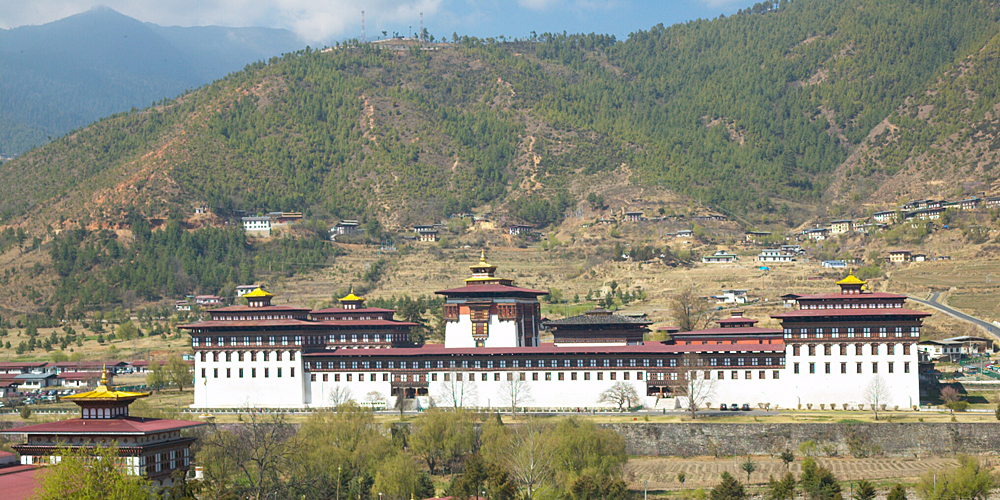
Plan your holidays andexplorethe top landmarks of Bhutanese capital. Basically, Tashichho Dzong, National Memorial Chorten and Takin Preserve, Simply Bhutan are the top attractions of Thimphu for visitors.
2. Paro
Paro, the foremost must see place in Bhutan, is a gorgeous beautiful valley, surrounded by lush green rice fields. Paro is a historic town with many sacred sites and historical buildings scattered through the area. In Paro, Rinpung Dzong mostly attracts the visitor. Rinpung Dzong is one of the finest examples of a Bhutanese monastery. The Dzong hosts the Paro Tsechu i.e festival of masks. Beyond this, National Museum of Paro holds the visitors in Paro.
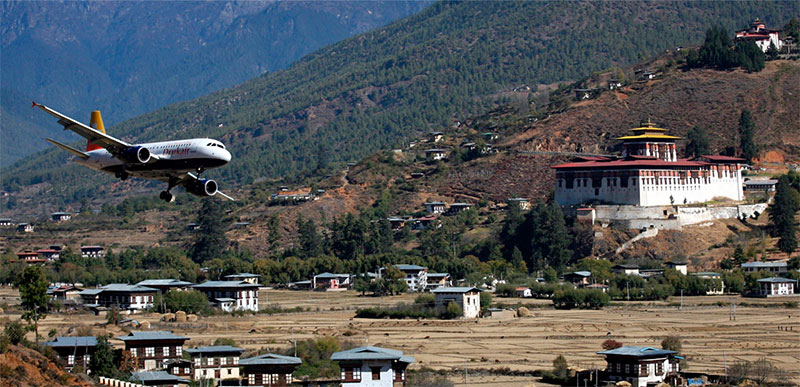
The museum exhibits rich stamp collections, slate carvings, Thangka paintings, prehistoric items, jewelry, traditional weapons and other articles reflecting Bhutanese culture.
3. Bumthang Valley Bumthang Valley, the spiritual heartland of Bhutan, is full of most ancient and precious Buddhist sites. Located at an altitude of 2,600 meters, the religious hub of Bhutan houses some of the oldest Buddhist temples.
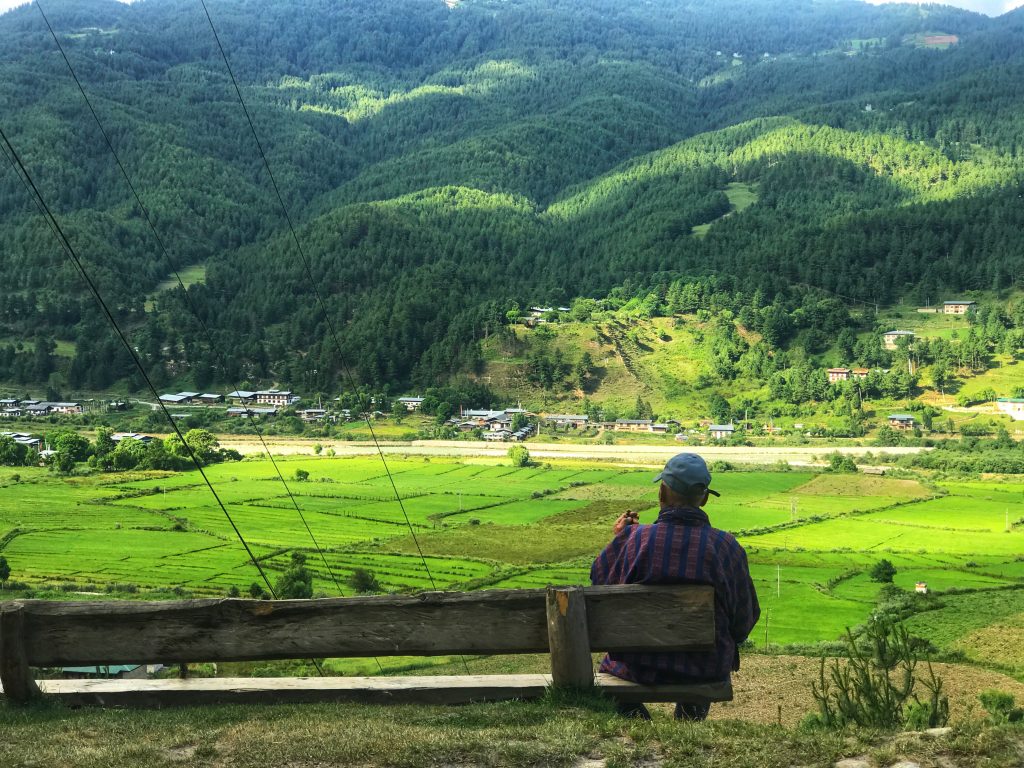
Besides, Jakar is the main town in Bumthang Valley and its undulating terrain, which is filled with apple trees and numerous temples, is a tourist’s delight.
4. Phobjikha and Gangtey Valley
Phobjikha and Gangtey Valley, both the places are also must see locations in Bhutan. The Gangtey and Phobjikha are glacial valleys with a stream flowing through their open grasslands presenting one of the most beautiful landscapes in Bhutan. It is home to endangered black-necked crane.
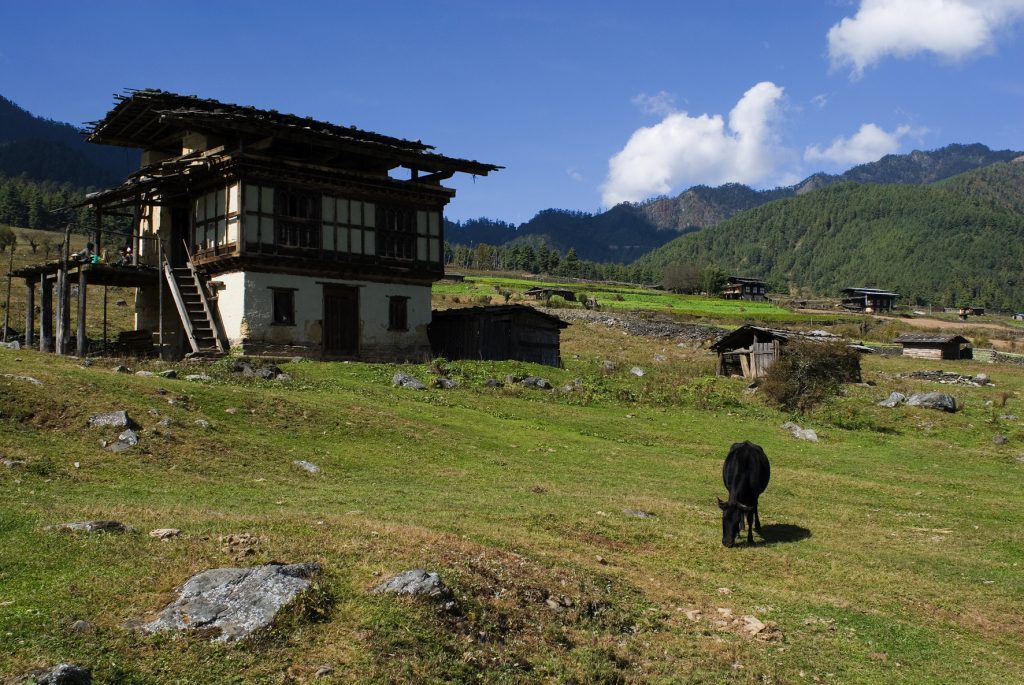
The famous Black mountain national park, home to diverse specie of flora and fauna is also nearby. It is around 6 hours drive from Thimpu. The drive among Dochula Chortens and Rhodos is mind-blowing. The entire region is sometimes called Gangtey. Gangtey Monastery and Jigme Singye National Park are famous among visitors in the region.
5. Haa Valley
Haa Valley, a relatively new but must see destination in Bhutan, is popular for virgin beauty of nature. Along with scenic sights, you will also find some temples and fortresses around this valley.
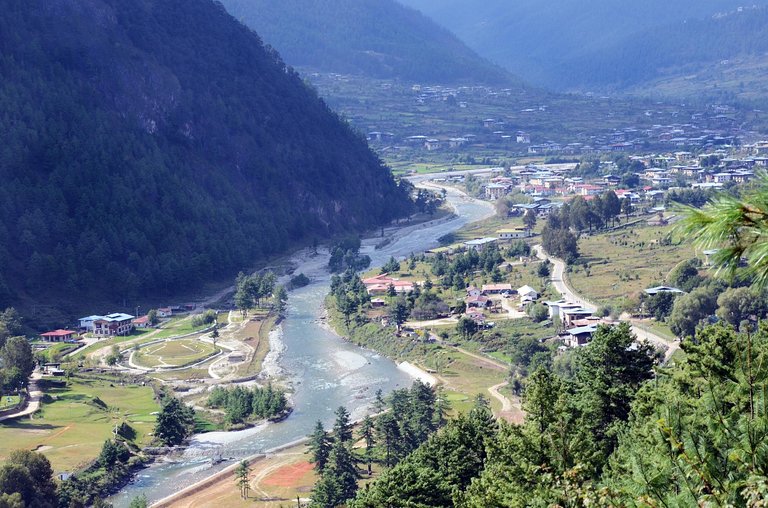
Lhakhang Karpo and Nagpo-the famous White and Black temples, Shekhar Drak-an unique temple, Tagchu Goemba-a100 year old temple and Dobji Dzong- a five storeyed fortress on a hilltop are the things that engage you in the valley.
6. Punakha
Also known as Pungtang Dewa chhenbi Phodrang, which translates into “the palace of happiness and bliss”, Punakha Dzong is a 17th century monastery that was constructed by the first Bhutanese Zhabdrung Rinpoche, and it is the second oldest Buddhist dzong in the kingdom. Once the administrative seat of government in Bhutan until 1955, the dzong houses some of Bhutan’s most sacred relics of the Drukpa Lineage of the Kagyu School of Buddhism, as well as the sacred remains of the first Zhabdrung Rinpoche.
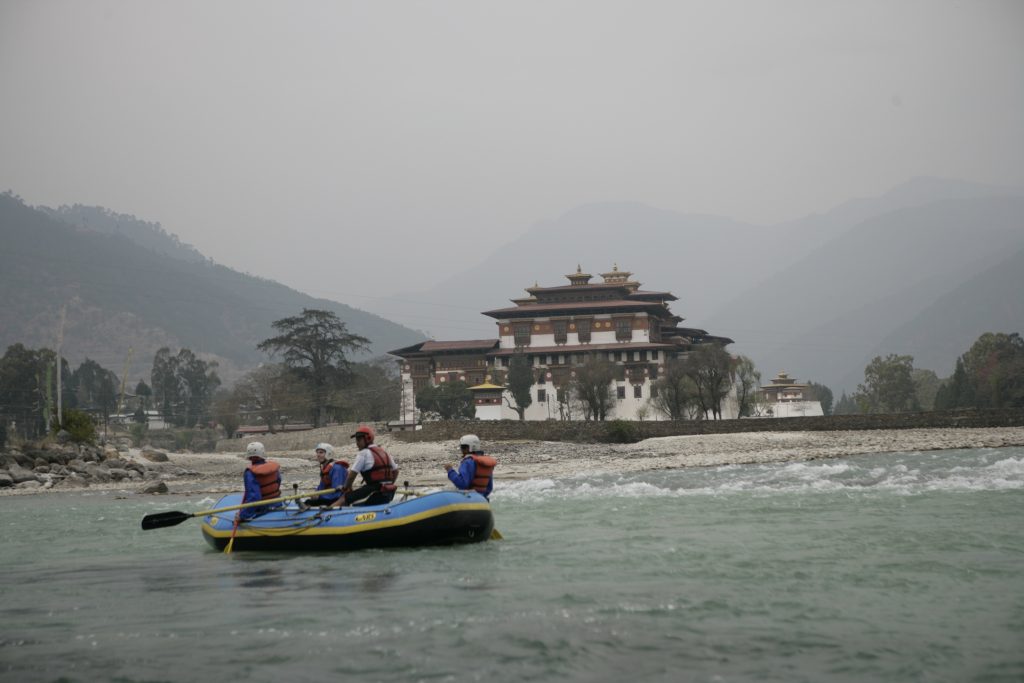
The dzong was also the site of the wedding of King Jigme Khesar Namgyel Wangchuck and his bride, Jetsun Pema, in October 2011, which was the first national TV broadcast to the Bhutanese people.
7. Jhomolhari Jhomolhari huge mountain sits at 7,326 meters, yet is not the tallest mountain in Bhutan. Sitting astride the border between Tibet and Bhutan, the mountain is the source of the Paro River, which flows down the southern side of the mountain, and the Amo River, which flows down the north side. Known as the “bride of Kanchenjunga”, Bhutanese Buddhists believe it to be the home of one of the Five Tsheringma Sisters, the female protector goddesses of Bhutan and Tibet, who were bound by Padmasambhava to protect the people, the lands, and the Buddhist faith from evil demons.
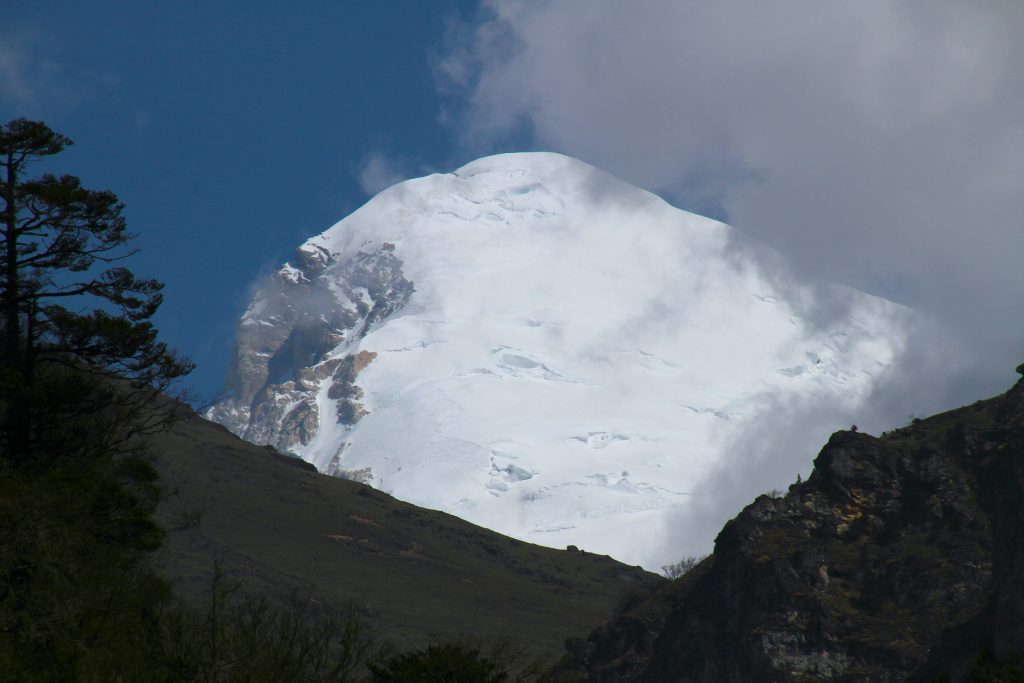
On the south side of the mountain, at 4,150 meters, lies the Jhomolhari Temple, where religious pilgrims visiting the mountain stay, and just an hour’s walk up the mountain lies one of Bhutan’s highest lakes, the Tseringma Lhatso, or “spirit lake”.
8. Taktshang – Tiger’s Nest Monastery
Sitting more than 800 meters above the Paro Valley, perched on a ledge halfway up the cliff face of the mountain, sits the awesome Taktshang or Tiger’s Nest Monastery. Renowned around the world for its unique and spectacular position, the Taktsang Monastery has become something of a legend in Bhutan, and across many parts of Asia and around the world where Buddhism resides. Believed to be the meditation place of the Guru Rinpoche (Padmasambhava), who first brought Buddhism to Bhutan, legend has it that he landed on the mountain after flying on a giant tigress believed to be a consort known as Yeshe Tsogyal.
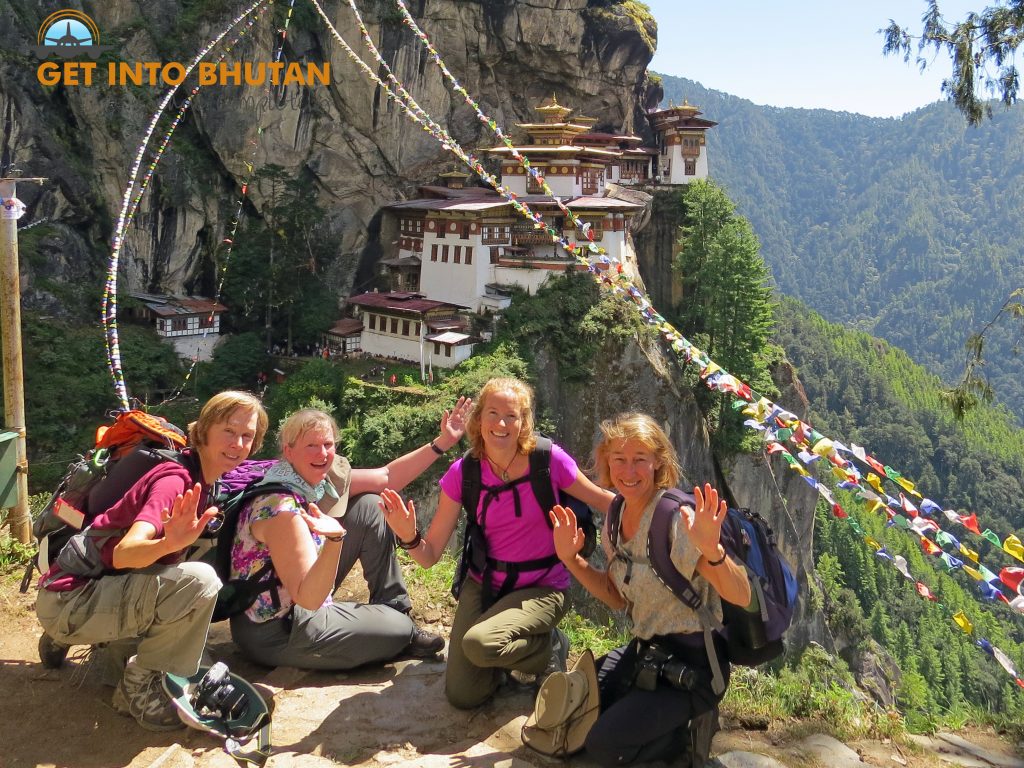
After meditating in the 13 caves on the ledge for three years, three months, three weeks, three days, and three hours, he emerged in eight manifestations and the place became holy. The monastery was built around the caves in 1692, and has since become a cultural icon of the Bhutanese people.
9. Wangduephodrang
Wangduephodrang, another popular place in Bhutan, is the last town on the central highway before central Bhutan. Located in the south of Punakha, the higher reaches of the Wangduephodrang valley provide rich pastureland for cattle. This district is also famous for its fine bamboo products, slate and stone carvings. Wangduephodrang Dzong, sitting on top of the hill at the confluence of Punakha Chhu and Tang Chhu rivers, is the attractive landmark of Wangduephodrang.
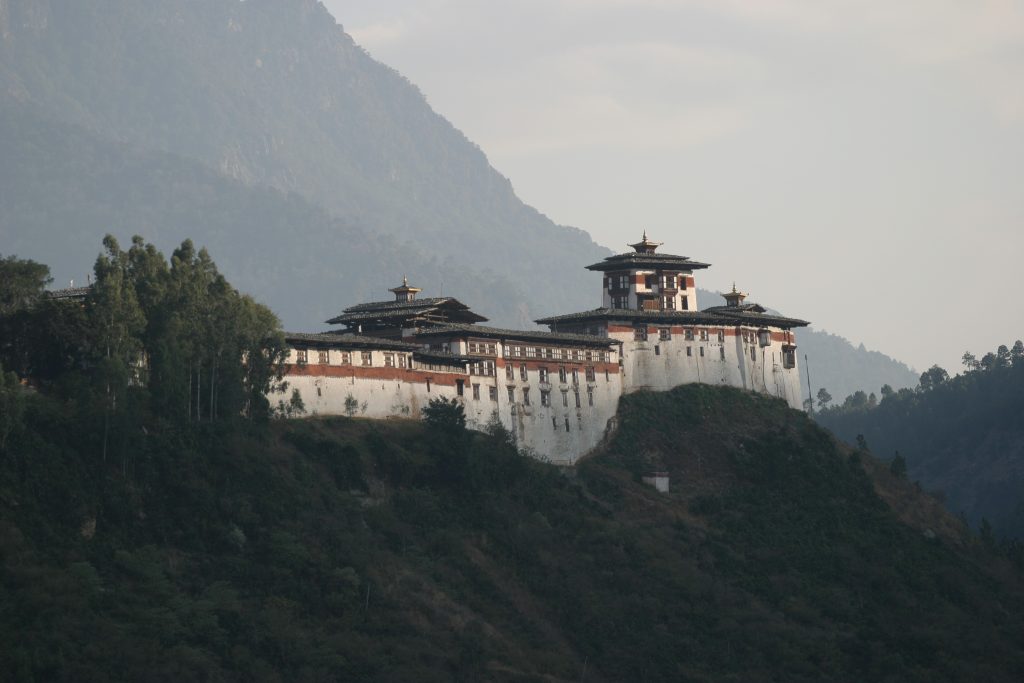
The Dzong is open for visitors during Wangduephodrang Tsechu celebration in autumn.
10. Mongar and Lhuntse
Although geographically separated, these two places are considered as one by tourists. Located on the eastern part of the country, Mongar is a small town, which is one of the beautiful ones in Himalayas. You can find small structures, monasteries, nature and ruins in this region.
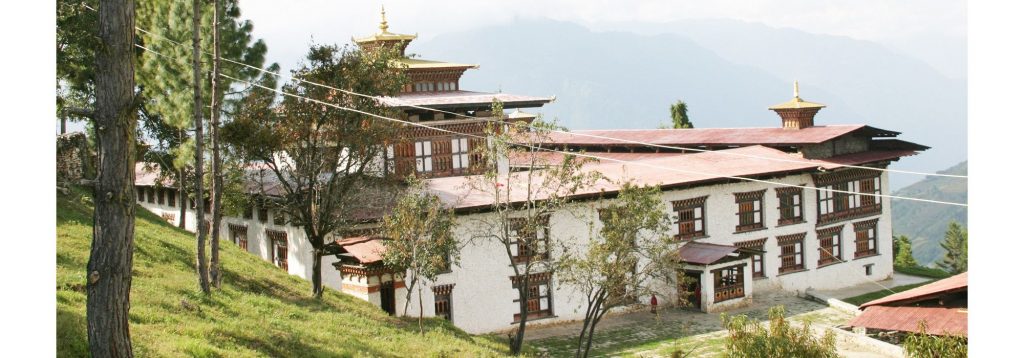
Mongar Dzong is built in the place of the ruins and as a tradition, the entire monastery was built without a single nail or drawing.
